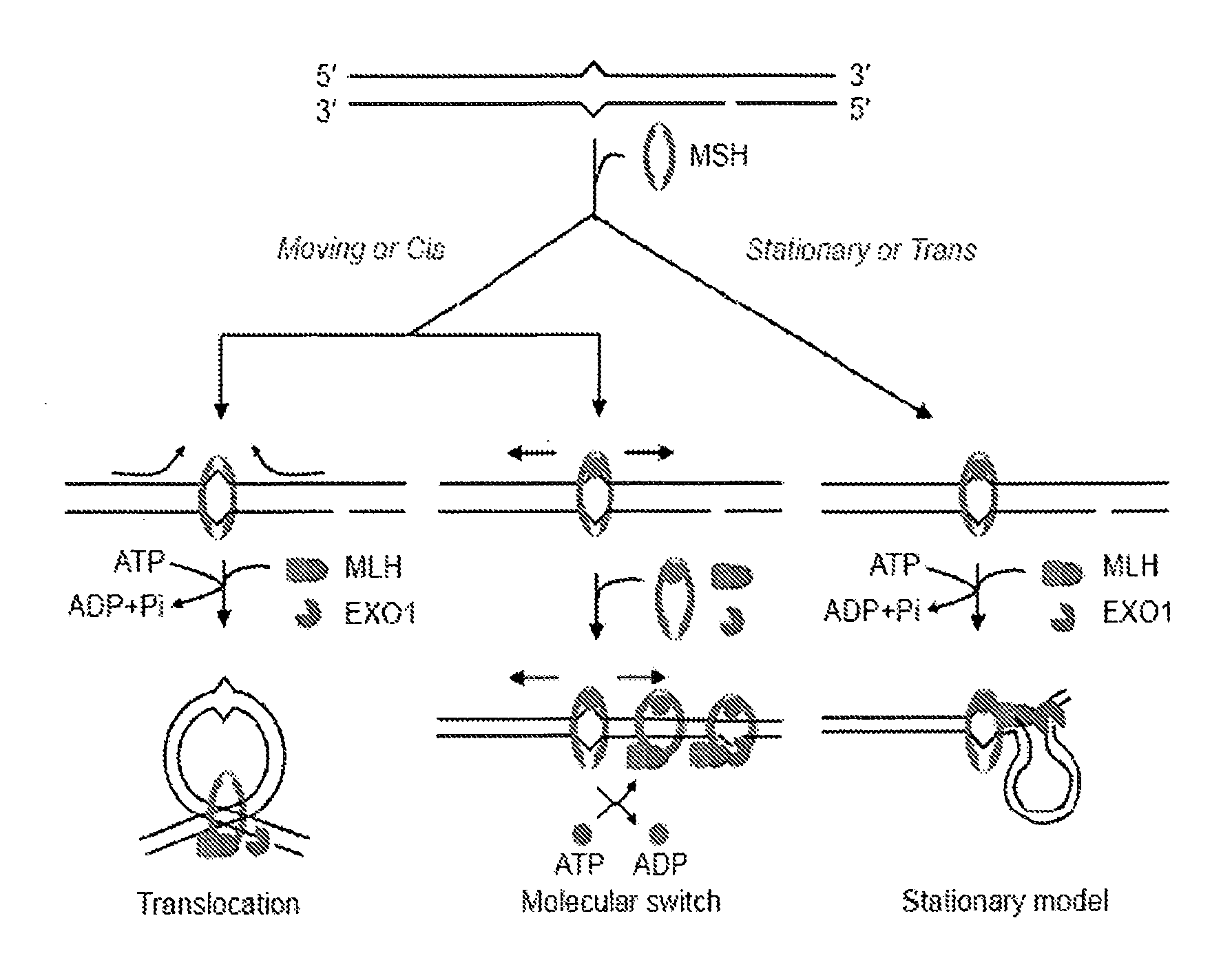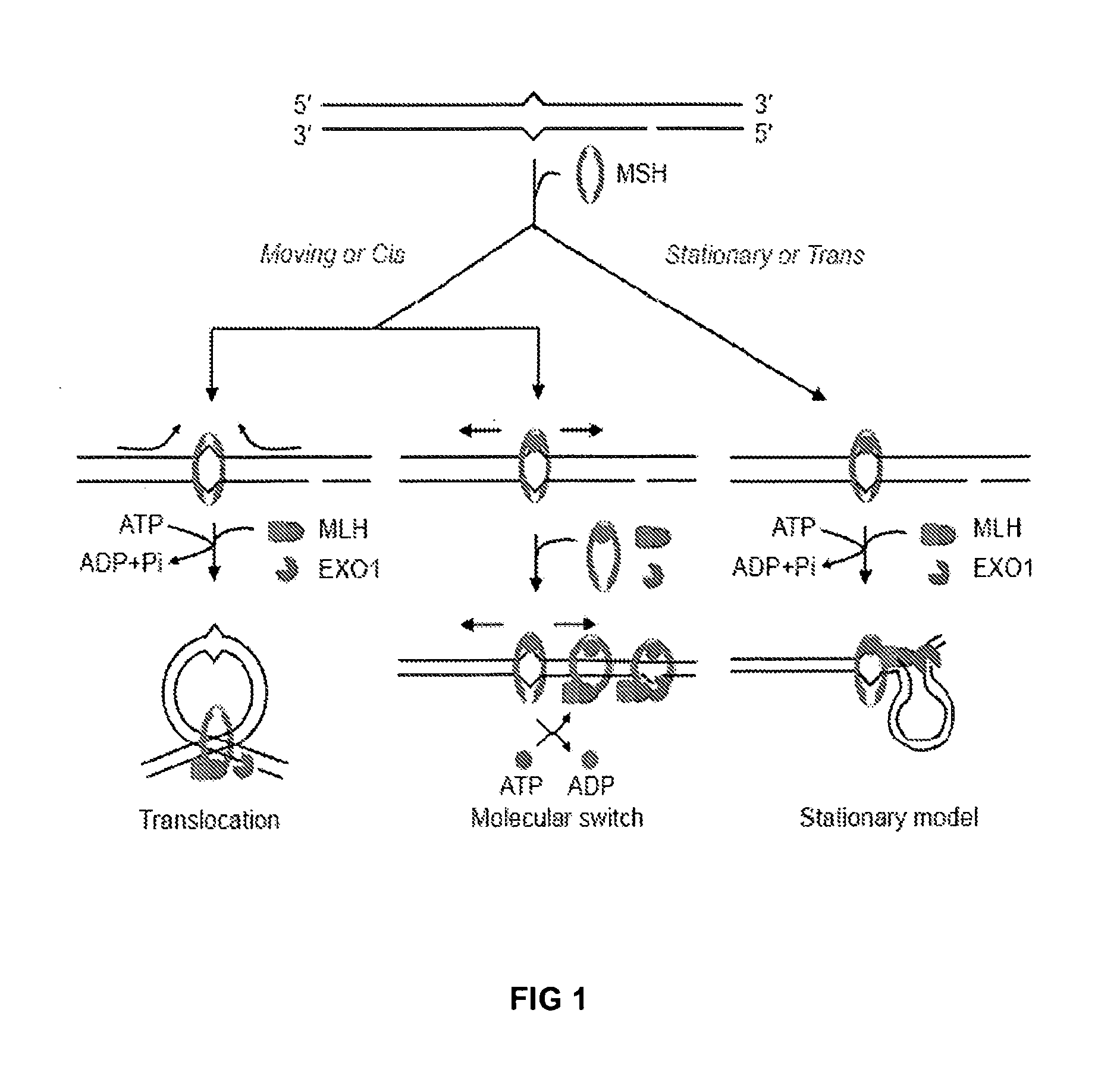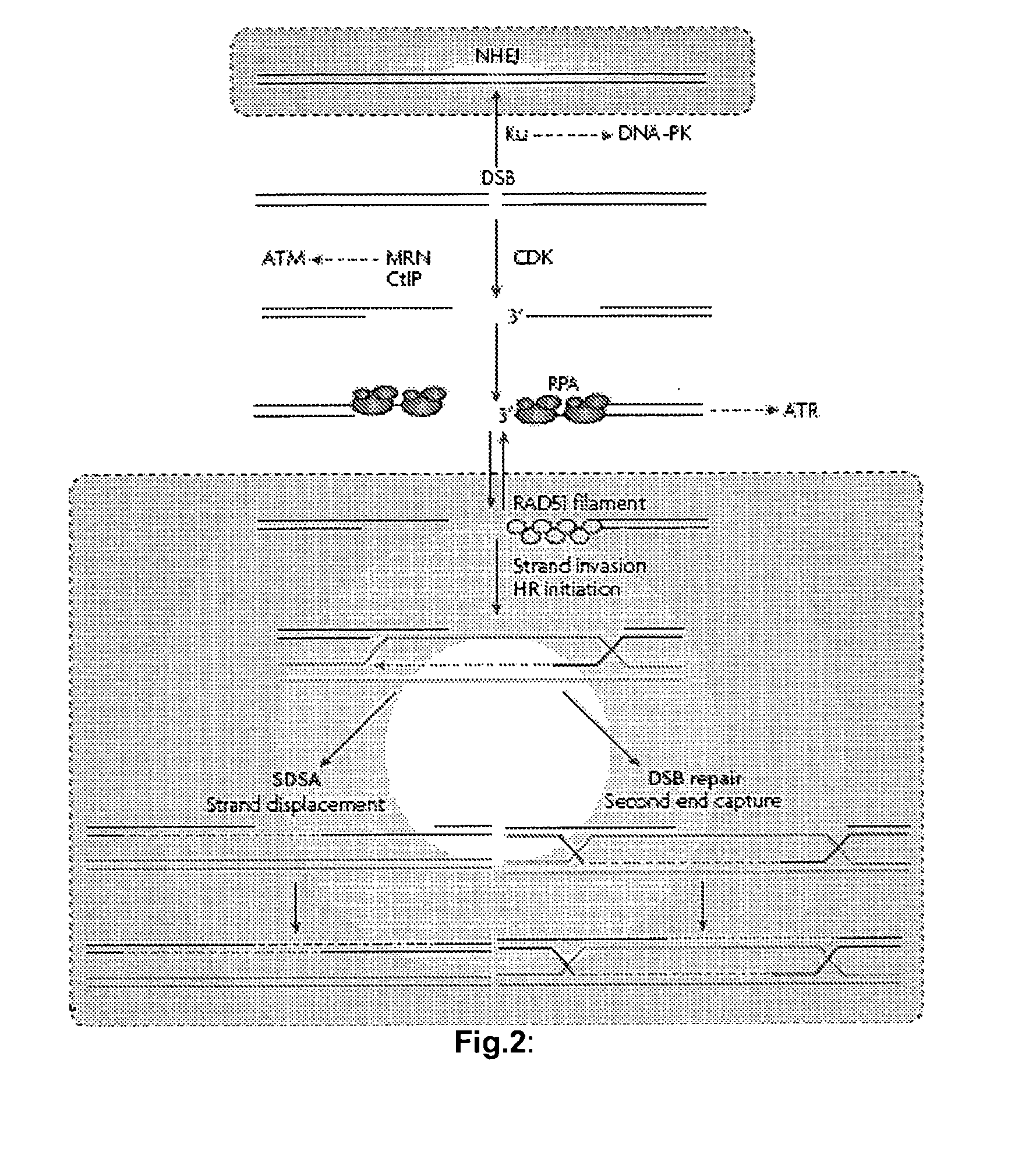Techniques for transfecting protoplasts
- Summary
- Abstract
- Description
- Claims
- Application Information
AI Technical Summary
Benefits of technology
Problems solved by technology
Method used
Image
Examples
examples
Plant Mismatch Repair Genes and Non-Homologous End Joining Genes
[0144]The public databases were screened for tobacco and tomato EST's sharing homology with genes involved in the MMR pathway (MSH2) and the NHEJ pathway (Ku70). The regions used to produce dsRNA are underlined. dsRNA was produced according to protocols well known in the art. In addition, a non-specific dsRNA species was generated derived from a plasmid which shows no significant homology with any of the genes of interest. This was used as a control to demonstrate that the presence of dsRNA per se is not responsible for suppression of specific mRNA's.
Tomato Ku70[SEQ ID NO 1]GGAAGATCTGAACGACCAGCTTAGGAAACGCATGTTTAAGAAGCGCAGAGTTCGAAGACTTCGACTTGTAATTTTTAATGGATTATCTATCGAACTTAACACCTATGCTTTGATCCGTCCAACTAATCCAGGGACAATTACTTGGCTTGATTCGATGACTAATCTTCCTTTGAAGACTGAGAGAACCTTCATATGTGCTGATACTGGTGCTATAGTTCAGGAGCCTCTAAAACGCTTTCAGTCTTACAAAAATGAGAATGAGCGTTTTGCAGTTGCTTTCTATGGGAATTTAAGTCATCCTCAATTGGTTGCTCTTGTTGCACAAGATGAAGTAATGACTCCTAGTGGTCAA...
example 3
[0158]A tobacco Bright Yellow 2 cell suspension containing a non-functional EGFP gene was produced by introducing a point mutation in the chromophore region of the protein resulting in the formation of a premature stop codon. This line is used as reporter system to test the influence of various parameters on the repair of the EGFP gene by oligonucleotide-mediated targeted gene repair.
[SEQ ID NO 7]ATGGGAAGAGGATCGCATCACCACCATCATCATAAGCTTCCAAAGAAGAAGAGGAAGGTTCTCGAGATGGTGAGCAAGGGCTAGGAGCTGTTCACCGGGGTGGTGCCCATCCTGGTCGAGCTGGACGGCGACGTAAACGGCCACAAGTTCAGCGTGTCCGGCGAGGGCGAGGGCGATGCCACCTACGGCAAGCTGACCCTGAAGTTCATCTGCACCACCGGCAAGCTGCCCGTGCCCTGGCCCACCCTCGTGACCACCCTGACCTACGGCGTGCAGTGCTTCAGCCGCTACCCCGACCACATGAAGCAGCACGACTTCTTCAAGTCCGCCATGCCCGAAGGCTACGTCCAGGAGCGCACCATCTTCTTCAAGGACGACGGCAACTACAAGACCCGCGCCGAGGTGAAGTTCGAGGGCGACACCCTGGTGAACCGCATCGAGCTGAAGGGCATCGACTTCAAGGAGGACGGCAACATCCTGGGGCACAAGCTGGAGTACAACTACAACAGCCACAACGTCTATATCATGGCCGACAAGCAGAAGAACGGCATCAAGGTGAACTTCAAGATCCGCCACAACAT...
PUM
| Property | Measurement | Unit |
|---|---|---|
| Time | aaaaa | aaaaa |
| Time | aaaaa | aaaaa |
| Time | aaaaa | aaaaa |
Abstract
Description
Claims
Application Information
 Login to View More
Login to View More - R&D
- Intellectual Property
- Life Sciences
- Materials
- Tech Scout
- Unparalleled Data Quality
- Higher Quality Content
- 60% Fewer Hallucinations
Browse by: Latest US Patents, China's latest patents, Technical Efficacy Thesaurus, Application Domain, Technology Topic, Popular Technical Reports.
© 2025 PatSnap. All rights reserved.Legal|Privacy policy|Modern Slavery Act Transparency Statement|Sitemap|About US| Contact US: help@patsnap.com



